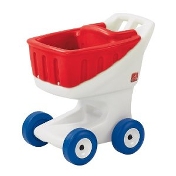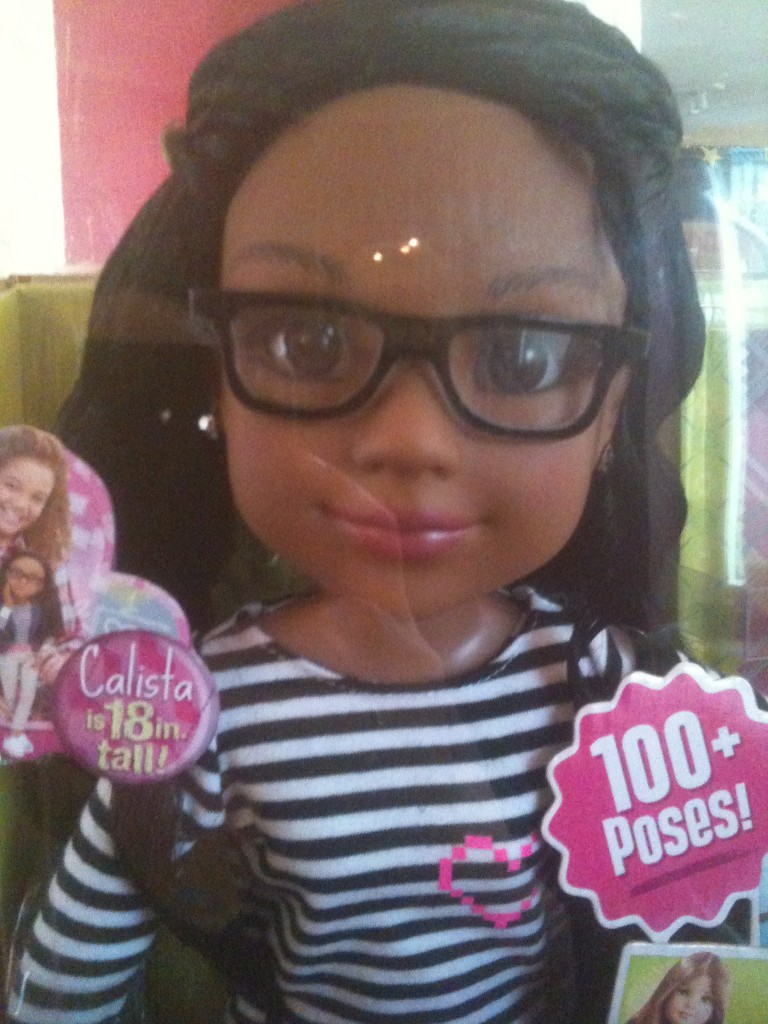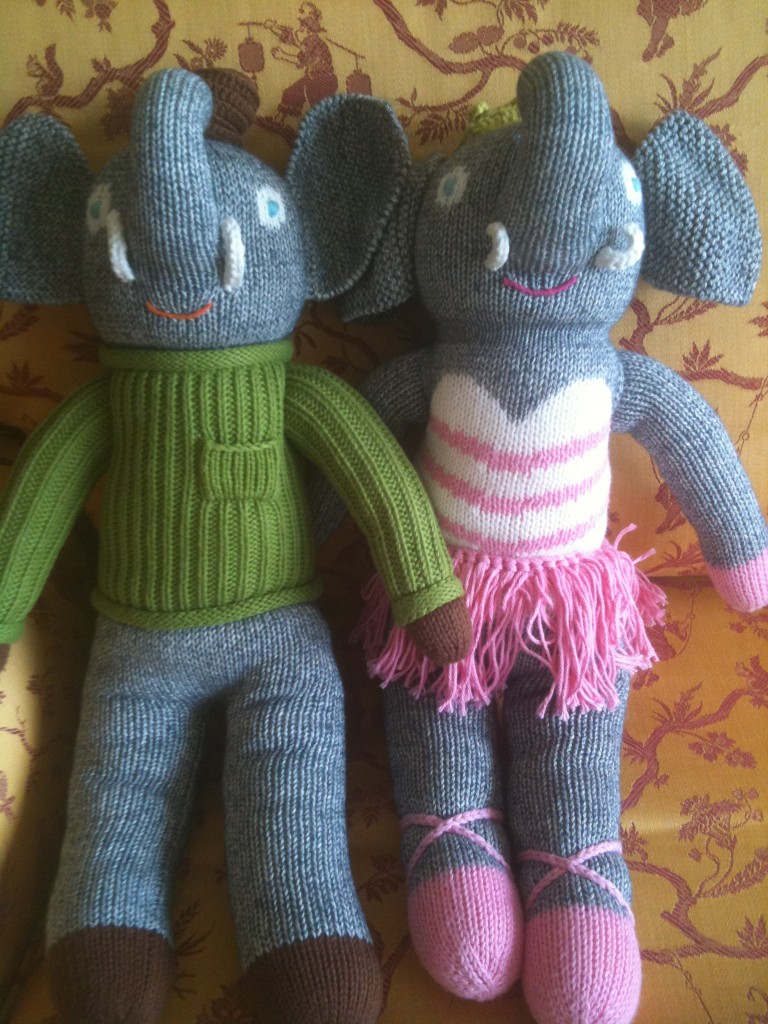 I always thought my brother’s Hot Wheels sets were much more interesting than any doll my parents brought home to me – which is probably why I have problems with the concept that play things should be gender based. Construction sets like LEGOs were also big on my list (although my mother will tell you that I was most fascinated with putting all the pieces back in the box). My slight OCD tendencies aside, when we started the Oppenheim Toy Portfolio I was taken aback by the blatant gender specific marketing to boys and girls. In big toy companies the divisions are actually divided by sex. Had this generation of marketers and toy makers missed the fight for women’s rights? gender equality? Are we really ready to say that a five year old has a innate desire to play with only certain toys? It still bothers me. So each year we look for toys that are gender free. Why do building bricks need to be pink for girls? If we want our sons to grow up to be great partners, husbands and fathers–shouldn’t they also role play with such basic family staples as kitchens, strollers and baby dolls? If these issues bother you as well, take a look at our list for some gender free suggestions.
I always thought my brother’s Hot Wheels sets were much more interesting than any doll my parents brought home to me – which is probably why I have problems with the concept that play things should be gender based. Construction sets like LEGOs were also big on my list (although my mother will tell you that I was most fascinated with putting all the pieces back in the box). My slight OCD tendencies aside, when we started the Oppenheim Toy Portfolio I was taken aback by the blatant gender specific marketing to boys and girls. In big toy companies the divisions are actually divided by sex. Had this generation of marketers and toy makers missed the fight for women’s rights? gender equality? Are we really ready to say that a five year old has a innate desire to play with only certain toys? It still bothers me. So each year we look for toys that are gender free. Why do building bricks need to be pink for girls? If we want our sons to grow up to be great partners, husbands and fathers–shouldn’t they also role play with such basic family staples as kitchens, strollers and baby dolls? If these issues bother you as well, take a look at our list for some gender free suggestions.
Monthly Archives: October 2010
More on Cadmium
Happy to read Ravlya Ismall’s piece Why Do Jewelery Makers Get Off Easy With Cadmium?
There are certainly many issues facing the nation this year–but the lack of aggressiveness on this issue on the part of the CPSC seems to be a step backwards when it comes to protecting our children from hidden dangers in toys and jewelry.
Pick of the Day: Radio Flyer Bumper Car
 Ride on toys for toddlers is always one of the hardest categories we review. Over the past few years we’ve noticed that one of the ways companies have cut back is to do away with steering mechanisms. Now this bumper car also doesn’t steer but because it’s on casters – it does move easily in any direction your child would like to go. What really annoys me are ride-ons where your child has to stand up and move the toy and then sit down again- where’s the fun in that? To read our full review and for shopping info — click here!
Ride on toys for toddlers is always one of the hardest categories we review. Over the past few years we’ve noticed that one of the ways companies have cut back is to do away with steering mechanisms. Now this bumper car also doesn’t steer but because it’s on casters – it does move easily in any direction your child would like to go. What really annoys me are ride-ons where your child has to stand up and move the toy and then sit down again- where’s the fun in that? To read our full review and for shopping info — click here!
Doll Wars!
 Lock and load–there is a doll wars this year! Read Joanne’s article. Our take away–all really great for consumers!
Lock and load–there is a doll wars this year! Read Joanne’s article. Our take away–all really great for consumers!
Pick of the Day: Strobotop Light Animator
 Most science toys we look at are duds. They’re typically really expensive and they don’t work. So we were thrilled when we tried the new Strobotop Lightphase Animator from Eye Think. It rocks. If you have a child interested in science and/or the movies – here’s a beginning lesson from the world of Physics (my high school interns who had just finished AP Physics explained why changing the light frequency changes what we see). Here’s what you do: put of the printed rings on the toy-you can clearly see the images. Then make it spin, it alters what you see–then put the strob light on the spinning image and the static images now move like an animated cartoon. Really! (It’s been a long time since I took Physics. A shout out to Mr. Stewart–my favorite science teacher from Monticello High School for being consistently thrilled with sharing science with his class. I’m pretty sure he would love this toy.)
Most science toys we look at are duds. They’re typically really expensive and they don’t work. So we were thrilled when we tried the new Strobotop Lightphase Animator from Eye Think. It rocks. If you have a child interested in science and/or the movies – here’s a beginning lesson from the world of Physics (my high school interns who had just finished AP Physics explained why changing the light frequency changes what we see). Here’s what you do: put of the printed rings on the toy-you can clearly see the images. Then make it spin, it alters what you see–then put the strob light on the spinning image and the static images now move like an animated cartoon. Really! (It’s been a long time since I took Physics. A shout out to Mr. Stewart–my favorite science teacher from Monticello High School for being consistently thrilled with sharing science with his class. I’m pretty sure he would love this toy.)
For a complete description of how it works and shopping info, read our complete review.
One aspect that we love is that you can create your own images to make move (it comes with blank disks). The company has made a great video showing how this works-you have to stick with the video to see it–the demo comes towards the end. You can watch their video by clicking here.
A different spin on Cadmium in children’s products
I was somewhat surprised today to see how the NYTs is addressing the cadmium issue in their article, U.S. Seeks Limits on Cadmium for Toys and Jewelry. What really happened yesterday was the that CPSC asked the industry to self-regulate. The CPSC Chairman, Inez M. Tenebaum is quoted: “If we find those standards are insufficient to protect the health and safety of consumers, then we can move to a mandatory standard.”
Why are we waiting? I would have thought that after our experiences with the toy industry and dangerous lead levels–that we have learned our lesson about self-regulation. Leaving this to the industry also means a continued uncertainty about how to test for cadmium. As with lead the way you test can greatly impact the results. We agree with the Center for Environmental Health that the standard on the federal level should be the same as it is now in California–which bans children’s jewelry that contains more than 300 parts per million total cadmium. The “total” testing approach is superior to the extraction approach being used. The CEH points out that the extraction approach does not take into account the wear and tear that occurs.
This is a step in the wrong direction.
My continuing fascination with singamajigs
I love these dolls. The harmonizing is fun. Here’s another video where we demonstrate that they each sing a different song. For a full review visit our site, www.toyportfolio.com. I’ll try to stop writing about them…but when the new batch arrives – I may have to post some more.
CPSC Backs off Tougher Standards for Cadmium in Children’s Products
Despite all indications that the CPSC was really stepping up and setting tough standards on the levels of cadmium in children’s products– today the agency backed down. They are suggesting that the industry self-enforce. Hmmmm? How well did that work out the last time when we were talking about lead. We are especially concerned that children’s jewelry (that often finds its way into the mouth) is full of cadmium (instead of lead).
Here is an excerpt from the press release we received from the non-profit group Center for Environmental Health:
“Today’s announcement falls far short of what is needed to end this health threat to children,” said Michael Green, Executive Director of CEH. “California has adopted a sensible standard that should serve as a national model for limits on cadmium in children’s products. Sadly, if it goes forward, CPSC’s standard would be a step backwards for children’s health.”
In September, Governor Schwarzenegger signed into law legislation banning sales of children’s jewelry that contain more than 300 parts per million (ppm) total cadmium. In advocating for the law, which had bipartisan and industry support, CEH noted that a standard based on the total amount of cadmium – and not the amount extracted in a lab solution – is more health protective for children, more enforceable for government regulators, and less expensive and less cumbersome for industry to adopt.
CEH lead testing of thousands of toys and children’s products since 2008 has demonstrated that the federal standard – based on the total lead content – has been highly successful in protecting children and meeting industry’s need for predictable and achievable regulations. Despite this successful regulatory approach and California’s legislative approach, CPSC today announced that it is aiming to create a federal standard based on the amount of cadmium extracted from children’s items.
CEH notes that a total content standard is more appropriate for a cadmium rule because:
It’s safer for children: testing products using an extraction test at the time of production fails to account for normal wear-and-tear, which can dramatically change the amount of the toxic metal that could be released; total content testing avoids this problem, since the total amount of the toxic metal does not change.
It’s more enforceable: total content testing is more objective and repeatable than extraction testing, which is subject to much more variability and error.
It’s less costly and less cumbersome for industry: producers of children’s products can order and test raw materials for total content before fabricating products, saving them time and resources. In most cases, extraction testing is only valid on finished products, so producers may not know that a product fails testing until after the product is ready for marketing.
CEH also notes that inexpensive screening by x-ray fluorescence (XRF) analyzers for cadmium is widely available and already in use by some toy and children’s products companies. Yet such testing may be useless for meeting an extraction standard.
Earlier this year, CEH findings led to the group’s initiating the nation’s first-ever legal challenge to cadmium in jewelry. The nonprofit has ongoing litigation <http://www.ceh.org/index.php?option=com_content&task=view&id=440&Itemid=166> for sales of cadmium-tainted jewelry against leading major retailers, including Walmart, Saks, Rainbow and several others. CEH and other groups have also petitioned CPSC and the Environmental Protection Agency, urging them to address the issue of cadmium in children’s products. In an EPA response this August, the agency suggested it would “…work closely with CPSC to determine the most effective means for addressing cadmium in toy metal jewelry and other consumer products, and to determine if action by CPSC should have precedence.”
Pick of the day: blabla kids Elephants
Delicious! These blabla kids elephants just make you smile. We love the whole collection of animals and girl/boy dolls- just right for toddlers and preschoolers (and their parents!). For a complete review and shopping info visit our site by clicking here.
Read Joanne’s response to NYTs article on Picturebooks
Last week the NYTs ran an article Picture Books No Longer a Staple for Children. Be sure to read Joanne’s take on the state of picture books in our culture. As the author of more than 50 books for children and a former first and second grade teacher, her take is really informative.
Mine–is more a gut response. Most of the children’s books we are sent for review are terrible. There’s no other way to say it. There seems to be a growing disconnect between the intended reader (young children) and a new crop of children’s writers. It’s not just one or two books that seem off, but dozens and dozens of books that look like children’s books but seem much more appropriate for adult readers.


